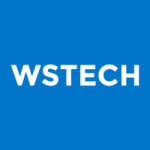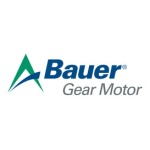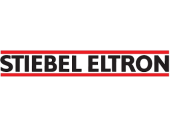iFE Case studies
Theoretische Ansätze und Lösungen sind nur so gut, wie sie sich auch in der Praxis umsetzen lassen - richtig! Aus dem Grund arbeiten wir praxisnah und anwenderorientiert, um Technologien und Lösungsansätze auch "in die Anwendung" zu bringen. In der Vergangenheit konnten wir bereits einige Erfolge feiern. Auf dieser Seite sehen Sie ausgewählte Projekte, die wir begleiten durften.
-
#1: DC INDUSTRIE
-
#2: Smart Country Storage
-
#3: Energeieffiziente Intralogistik
-
#4: Elektrifizierte Nebenaggregate
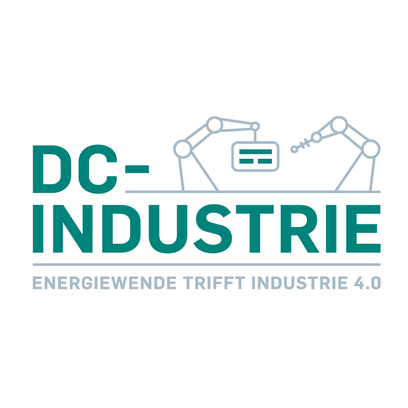
Case study #1: DC INDUSTRIE
Ziel des Forschungsprojekts DC-INDUSTRIE war es, die Stromversorgung industrieller Anlagen über ein smartes, offenes Gleichstromnetz neu zu gestalten und die industrielle Energieversorgungsarchitektur zu digitalisieren. So entsteht das industrielle Energiesystem der Zukunft: Ein gleichstrombasiertes Smart Grid für die Industrie. Nur so kann es den Ansprüchen nach mehr Energieeffizienz und Energieflexibilität in der industriellen Produktion genügen!
Energiewende trifft auf Industrie 4.0
Eine auf diese Weise mit Energie versorgte Produktion bietet zahlreiche Vorteile. Durch intelligente Netzsteuerung und integrierte Speicher kann sie flexibel und robust auf schwankende Netzqualität und Energieangebote reagieren. Außerdem können erneuerbare Energien leichter eingebunden und Wandlungsverluste von Wechsel- in Gleichspannung vermieden werden. Energieeinsparungen ergeben sich unter anderem durch die einfachere Nutzung und Pufferung von Bremsenergie, dem sogenannten generatorischen Bremsen, in Gleichstromnetzen.
Das mit sechs Millionen Euro geförderte Projekt wurde von 15 Verbundpartnern gemeinsam mit elf assoziierten Partnern im ZVEI initiiert und wird von Siemens koordiniert. Im Rahmen des dreijährigen Projekts wurden u.a. Testanlagen bei den Unternehmen Daimler, Homag Group und KHS errichtet. Auf der DC2019 wurden die Ergebnisse des Verbundprojekts erstmals der Öffentlichkeit vorgestellt.
Wie geht es nun weiter?
„Gleichstrom für die Fabrik der Zukunft“ – mit diesem Leitsatz ist am 1. Oktober 2019 das Forschungsprojekt „DC-INDUSTRIE 2“ gestartet, in dem die Potenziale der Gleichstromtechnik für industrielle Produktionsanlagen untersucht werden sollen. DC-INDUSTRIE2 schließt direkt an das sehr erfolgreiche Forschungsprojekt DC-INDUSTRIE an, in dem die Entwicklung, Anpassung und Erprobung von leistungselektronischen Geräten für die Versorgung und das Schützen von DC-Netzen in Produktionszellen sowie Methoden für deren robuste Betriebsführung im Vordergrund standen. In der Phase 2 soll das DC-Netz zu einem intelligenten DC-Netz für eine Produktionshalle oder eine prozesstechnische Großanlage ausgeweitet werden.
Inhaltlich baut das Projekt auf den Ergebnissen von DC INDUSTRIE auf. Hier wurde bereits ein umfangreiches Systemkonzept erarbeitet, dass nun für größere Anlagen erweitert werden soll: Einfachheit und Offenheit sind hierbei besonders wichtig. Mit 35 Industriepartnern, 5 Forschungsinstituten sowie dem ZVEI (Zentralverband Elektrotechnik- und Elektronikindustrie), der das Projekt im Rahmen seiner Verbandstätigkeit mit einem Industriearbeitskreis unterstützt, ist DC-INDUSTRIE 2 eines der größten Verbundforschungsprojekte in Deutschland. Das Konsortium bedankt sich insbesondere beim Bundesministerium für Wirtschaft und Energie, welches DC-INDUSTRIE 2 im Rahmen des 7. Energieforschungsprogramms unter den Fördernummern 03EI6002A-Q fördert, sowie beim Projektträger Jülich für die inhaltliche und administrative Betreuung der 18 geförderten Partner.
Case study #2: Smart Country Storage
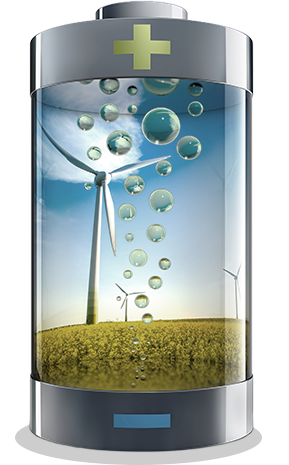
Angesichts der steigenden Urbanisierung und einer altersüberdurchschnittlich hohen Bevölkerungsanteilen in Deutschland ist die Zukunft des ländlichen Raumes zunehmend präsent bei Politik und Forschung. Mit seinen rund 47 Millionen Bewohnern macht der ländliche Raum knapp 90 Prozent der Fläche Deutschlands aus. Insgesamt erwirtschaftet dieser mehr als 60 Prozent der deutschen Wirtschaftsleistung. Insbesondere die Themen Mobilität und Energie sind hierbei im Fokus, denn die ländlichen Regionen in Deutschland bieten die Möglichkeit, neue Mobilitätsdienstleistungen oder Quartiersenergielösungen zu testen.
Des Modellvorhaben „Smart Country Storage“ setzt bei letzterem an durch die Entwicklung von elektrischen Energiespeichern im Rahmen einer nachhaltigen Energieversorgung im ländlichen Raum. Ziel ist es, die Machbarkeit eines Speichersystems auf Basis eines simulierten Speichereinsatzes zu überprüfen. Im Idealfall soll langfristig ein interkommunal übertragbares Versorgungskonzept außerhalb der Stadt bereitgestellt werden. Hierbei können insgesamt 13 Regionen in ganz Deutschland jeweils ihre Region als Experimentierfeld zur Erprobung individueller und innovativer Lösungskonzepte für die Zukunft erproben.
Auf Basis des Erneuerbare-Energien-Gesetzes (EEG) zum Ausbau der Stromversorgung mit Wind oder Sonne ist die Installation einer Photovoltaikanlage (PV-Anlage) auf dem Hausdach im März 2017 noch attraktiv. Nach 20 Jahren fallen diese Anlagen aus der EEG-Förderung, sodass die Stromeinspeisung für Privatpersonen unattraktiv werden könnte. Die bereits installierten Photovoltaikanlagen (ggf. auch Windkraftanlagen) produzieren jedoch weitehrin Strom, der mittels einer Energiedienstleistung gemeinschaftlich genutzt werden kann. Ein Smart Country Storage zur Energiespeicherung und -bereitstellung wird als eine mögliche Lösung des Problems gesehen, um einen höhere quartierbezogenen Eigenverbrauch zu generieren. Dadurch ist es möglich Wertschöpfung in der Region zu halten, indem die Besitzer von erneuerbaren Energieanlagen einen höheren Preis erziehen, als am Terminmarkt der Strombörse und gleichzeitig die Strombezugskosten der Bewohner zu senken. In der Modellregion Hagedorn im Kreis Höxter wird das Konzept einer gemeinschaftlichen Energiespeicherung und -nutzung getestet.
Eine gemeinschaftliche Energiespeicherung und -nutzung ist eine sinnvolle Anschlussnutzung, in der lokale Stromspeicher elektrische Energie zu einem günstigeren Preis als der übliche Marktpreis pro kWh an Privatpersonen verkauften. Strombedarf und -verbrauch werden pro Haushalt mittels Smart-Meter gemessen. Für die Modellregion bedeutet dies, dass die Anlage eigenständig feststellt, wann ein erhöhter Strombedarf in Hagedorn vorliegt und Strom aus dem lokalen Speicher abgerufen werden muss. Gleichzeitig erkennt das Smart-Meter eine geringe lokale Stromnachfrage und bietet in Folge des Stromüberschusses diesen zum Verkauf auf dem Strommarkt an. So können sowohl Betreiber und Nicht-Betreiber von PV-Anlagen um mehr als die Hälfte ihrer Stromkosten einsparen. Die Modellregion Hagedorn hat durch die Projektteilnahme die Möglichkeit, ein innovatives Konzept zur lokalen Energiespeicherung zu begleiten und langfristig eine Vorreiterrolle im Bereich der nachhaltigen Energieversorgung in ländlichen Gebieten einzunehmen.
Case study #3: Energieeffiziente Intralogistik
Das Projekt "Intelligente Antriebs- und Steuerungstechnik für die energieeffiziente Intralogistik" (it’s OWL-IASI) wurde im Rahmen des Spitzenclusters Intelligente Technische Systeme OstWestfalenLippe (its' OWL) realisiert. Auf der KlimaExpoNRW 2016 wurde es als Vorreiterprojekt im Bereich Energieeffizienz von der Landesregierung NRW ausgezeichnet. Etwa 60 Prozent der gesamten elektrischen Energie in Deutschland wird in elektrischen Motoren umgesetzt. Davon sind etwa ein Viertel Förderantriebe. Bislang wurde deren Energieverbrauch von den Unternehmen kaum betrachtet, da sich Investitionen in neue Antriebe gegenüber den Energieeinsparungen nicht rentierten. Vor dem Hintergrund steigender Energiekosten und der zunehmenden Komplexität der Intralogistik, ist der Energieverbrauch mittlerweile ein erheblicher Kostenfaktor, sodass sich die Einführung innovativer, intelligenter Antriebslösungen und einem intelligenten Lastmanagement insofern lohnt, als dass hohe Einsparpotenziale realisiert werden können.
Das Ziel des Projektes war die Entwicklung eines intelligenten Baukastensystems mit effizienten Antriebslösungen, um für jeden Antriebsprozess im Warenlager die ökologisch und ökonomisch optimale Lösung bereitzustellen. Darüber hinaus sollte ein intelligentes Lastmanagement konzipiert werden, um eine gleichmäßige Auslastung des Versorgungsnetzes zu gewährleisten.
Zunächst wurde der Energieverbrauch von Antriebskomponenten der Intralogistik in bestehenden Warenlagern und Logistikzentren systematisch ermittelt und analysiert. Dazu gehörten beispielsweise Umrichter, Motoren, Getriebe und mechatronische Einheiten. Die Ergebnisse dienten zu deren Klassifizierung nach Energieeffizienz und Kosten und als Grundlage für die Entwicklung neuer Komponenten. Weiterhin wurden Instrumente für die Auslegung der Antriebstechnik unter Berücksichtigung und Optimierung der Rückwirkungen auf das Stromnetz erarbeitet. Diese wurden zu einem intelligenten Lastmanagement für Warenlager zusammengeführt. In dem Projekt wurde auf die Ergebnisse der Querschnittsprojekte „Selbstoptimierung“, „Intelligente Vernetzung“ und „Energieeffizienz“ zurückgegriffen. Die Antriebskomponenten und das intelligente Lastmanagement wurden in Pilotwarenlagern getestet und nach erfolgreicher Testphase serienmäßig umgesetzt.
Durch die neuen Antriebslösungen wird der Energieverbrauch in Warenlagern zukünftig erheblich reduziert, ohne dabei die Qualität und Wirtschaftlichkeit zu beeinträchtigen. Es werden Energieeinsparungen von mindestens 15 v. H. bei gleichbleibenden oder geringen zusätzlichen Investitionen erwartet. Das intelligente Lastmanagement ermöglicht eine optimale Auslastung des Versorgungsnetzes durch die Vermeidung von Lastspitzen. Neben dem modularen Character des Baukastensystems, fördern die neuen Antriebe Wachstum und Beschäftigung bei den Projektpartnern und Dienstleistern (rund 70 neue Arbeitsplätze sind zu erwarten). Das Projekt leistet somit einen wichtigen Beitrag zur Wettbewerbsfähigkeit der Anbieter und Dienstleister der Intralogistik am Standort Deutschland.
Case study #4: Elektrifizierte Nebenaggregate für modulare Antriebswechselrichtersysteme

Das Verbundprojekt "Innovatives modulares Antriebswechselrichtersystem für die Elektrifizierung von Nebenaggregaten in Fahrzeuganwendungen" (it’s OWL-ImWR) wurde im Rahmen des Spitzenclusters Intelligente Technische Systeme OstWestfalenLippe (it’s OWL) zusammen mit der KEB Automation KG realisiert. Das Ziel des Projekts war die Entwicklung eines modularen Wechselrichtersystems für Nebenaggregate in Nutzfahrzeugen, welches aus Modulen unterschiedlicher Leistungsklassen kundenspezifisch konfiguriert werden kann. Langfristig kann so der Engineering-Aufwand für die Konfiguration reduziert und Fehler im Feld vermieden werden. Für die Teilprojekte wurden folgende Ziele definiert:
Elektrifizierte Nutzfahrzeuge haben, je nach Typ, unterschiedliche elektrische Nebenaggregate, die über ein entsprechendes Antriebswechselrichtersystem betrieben werden. Die Nebenaggregate können sich einerseits in der Leistungsklasse unterscheiden und treten weiterhin in verschiedenen Konstellationen mit anderen Nebenaggregaten auf. Um die Entwicklungskosten für kundenspezifische Systeme zu reduzieren, eignen sich modular aufgebaute Antriebswechselrichtersysteme, die unterschiedliche Leistungsklassen berücksichtigen und für eine Vielzahl von Anwendungsfällen geeignet sind. Um für Fahrzeuganwendungen nutzbar zu sein, müssen sie in eine kompakte und solide Fahrzeugkomponente integriert werden.
Da sich im Feld nicht nur die kundenspezifischen Systeme mit Wechselrichtermodulen verschiedener Leistungsklassen, sondern auch die Randbedingungen (z.B. Kühlung und Energieversorgung im Fahrzeug) unterscheiden, musste eine Möglichkeit geschaffen werden, schnell und effizient zu überprüfen, ob in der Gesamtkonfiguration z.B. keine thermische Überbeanspruchung oder Überlastung der elektrischen Versorgung auftritt. Hierzu wurden Bewertungsmodelle entwickelt und messtechnisch validiert, die den Applikationsprozess unterstützen und eine Problemlösung ermöglichten.
















